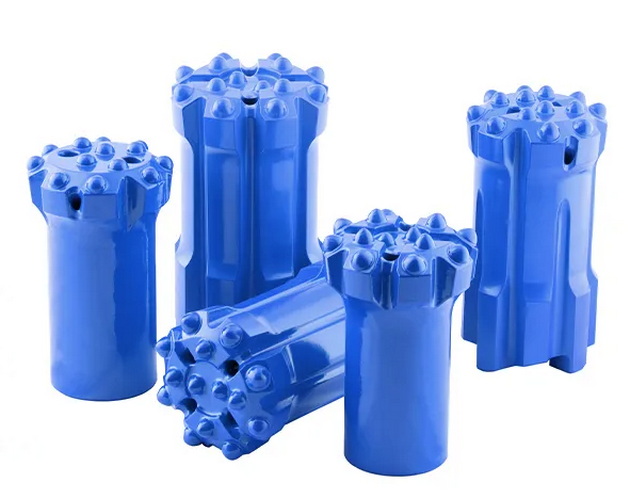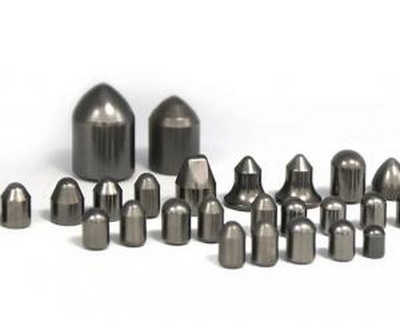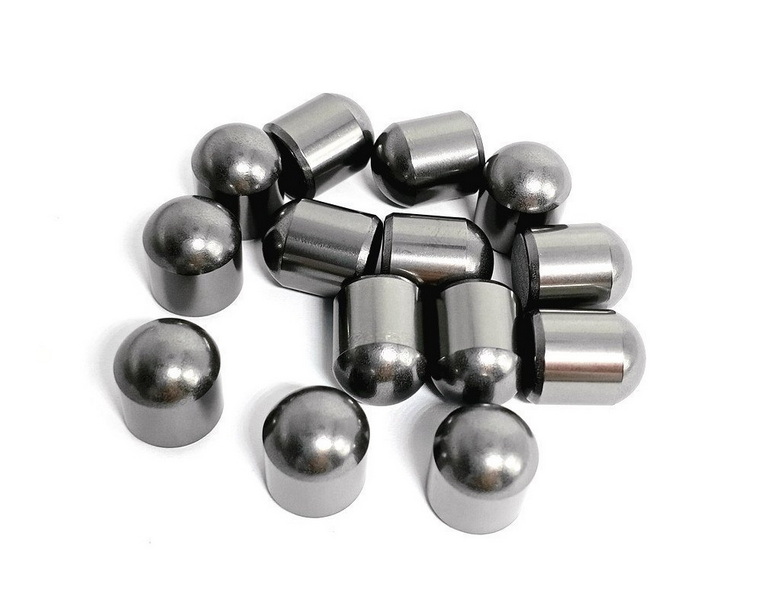Content Menu
● Introduction to Metal Detectors
>> Conductivity and Magnetism
● Properties of Tungsten Carbide
>> Physical Properties
>> Chemical Properties
● Detectability of Tungsten Carbide
>> Effect of Coating Thickness
>> Specialized Detectors
● Applications and Challenges
>> Industrial Applications
>> Detection Challenges
● Overcoming Detection Challenges
>> Advanced Detection Techniques
● Future Developments in Detection Technology
>> Role of Artificial Intelligence
● Conclusion
● Frequently Asked Questions
>> 1. What is the primary challenge in detecting tungsten carbide with metal detectors?
>> 2. How does the thickness of tungsten carbide coatings affect detection?
>> 3. Are there specialized metal detectors for tungsten carbide?
>> 4. What are the key properties of tungsten carbide that make it valuable in industrial applications?
>> 5. Can standard metal detectors detect other low-conductivity metals besides tungsten carbide?
● Citations:
Tungsten carbide, a compound of tungsten and carbon, is renowned for its exceptional hardness and wear resistance, making it a crucial material in various industrial applications. However, its detection by metal detectors poses a unique challenge due to its specific physical properties. This article delves into the detectability of tungsten carbide by metal detectors, exploring the principles of metal detection, the properties of tungsten carbide, and the limitations and potential solutions for its detection.

Introduction to Metal Detectors
Metal detectors operate on the principle of electromagnetic induction. They emit electromagnetic waves that interact with conductive materials, inducing eddy currents which generate magnetic fields detectable by the device. The effectiveness of metal detection depends on the conductivity, magnetism, volume, and thickness of the target material.
Conductivity and Magnetism
Highly conductive metals like copper and aluminum are easily detected due to their strong electromagnetic responses. Magnetic materials such as iron and nickel also produce significant signals. However, materials with low conductivity or non-magnetic properties are more challenging to detect.
Properties of Tungsten Carbide
Tungsten carbide is a semiconductor material with high resistivity, meaning it has poor conductivity compared to metals like copper or aluminum. It is also non-magnetic, which further complicates its detection by conventional metal detectors.
Physical Properties
- Hardness: Tungsten carbide ranks about 9 on the Mohs scale, making it one of the hardest substances known, second only to diamond.
- Density: It is twice as dense as steel, contributing to its high wear resistance.
- Thermal Properties: It maintains structural integrity at high temperatures and has a low thermal expansion coefficient.
Chemical Properties
Tungsten carbide is highly resistant to corrosion and chemical reactions, which makes it suitable for use in harsh environments. However, this resistance also contributes to its difficulty in detection, as it does not readily interact with electromagnetic fields.

Detectability of Tungsten Carbide
Given its low conductivity and non-magnetic nature, tungsten carbide is difficult to detect using standard metal detectors. The thickness of the tungsten carbide coating also plays a crucial role; thin coatings may not be detectable at all.
Effect of Coating Thickness
Thicker coatings may produce a detectable signal, but it will be weak due to the material's properties. Highly sensitive detectors might offer better results but are still limited by tungsten carbide's inherent characteristics.
Specialized Detectors
Advanced metal detectors designed specifically for low-conductivity materials can improve detection capabilities. These detectors use high electromagnetic fields to penetrate and detect materials like tungsten carbide more effectively. They often employ technologies such as pulse induction or very low frequency (VLF) to enhance sensitivity.
Applications and Challenges
Tungsten carbide is used in various industries, including manufacturing, mining, and aerospace, due to its durability and resistance to wear. However, its detection remains a challenge, particularly in environments where precise material identification is critical.
Industrial Applications
- Drilling and Mining: Tungsten carbide is used in drill bits and other cutting tools due to its hardness and wear resistance.
- Aerospace: It is used in rocket nozzles and other components that require high thermal resistance.
- Medical: Tungsten carbide is used in surgical instruments and implants due to its biocompatibility and durability.
Detection Challenges
In industries where material identification is crucial, such as in quality control or security screening, the inability to detect tungsten carbide efficiently can pose significant challenges. This includes potential safety risks if undetected tungsten carbide components fail under stress.
Overcoming Detection Challenges
To overcome these challenges, several strategies can be employed:
1. Use of Specialized Detectors: As mentioned, advanced detectors can improve detection capabilities.
2. Material Analysis Techniques: Techniques like X-ray fluorescence (XRF) or scanning electron microscopy (SEM) can provide detailed material composition analysis, helping identify tungsten carbide even when metal detectors fail.
3. Visual Inspection: In some cases, visual inspection by trained personnel can help identify tungsten carbide components based on their appearance and context.
Advanced Detection Techniques
- X-ray Computed Tomography (CT): This method provides detailed internal images of objects, allowing for the identification of tungsten carbide components within complex assemblies.
- Neutron Activation Analysis (NAA): This technique involves bombarding the material with neutrons to induce radioactive isotopes, which can be measured to determine the material's composition.
Future Developments in Detection Technology
Advancements in detection technology are continually improving the ability to identify materials like tungsten carbide. For instance, the development of more sensitive detectors and the integration of artificial intelligence (AI) for signal processing can enhance detection accuracy and speed.
Role of Artificial Intelligence
AI can help analyze complex signals from detectors, improving the accuracy of material identification. It can also automate the detection process, reducing human error and increasing efficiency in industrial settings.
Conclusion
In conclusion, while tungsten carbide is difficult to detect with standard metal detectors due to its low conductivity and non-magnetic properties, specialized detectors and advanced material analysis techniques can offer improved detection capabilities. The thickness of the coating and the sensitivity of the detector are key factors in successful detection. Understanding these challenges and employing appropriate strategies can help mitigate risks associated with undetected tungsten carbide in various industries.

Frequently Asked Questions
1. What is the primary challenge in detecting tungsten carbide with metal detectors?
The primary challenge is tungsten carbide's low conductivity and non-magnetic nature, which makes it hard for standard metal detectors to generate strong detection signals.
2. How does the thickness of tungsten carbide coatings affect detection?
Thicker coatings are more likely to be detected, but even then, the signal may be weak. Thin coatings may not be detectable at all due to the material's properties.
3. Are there specialized metal detectors for tungsten carbide?
Yes, there are advanced detectors designed specifically for detecting low-conductivity materials like tungsten carbide. These detectors use stronger electromagnetic fields to enhance detection.
4. What are the key properties of tungsten carbide that make it valuable in industrial applications?
Tungsten carbide is valued for its exceptional hardness, high density, and resistance to wear and corrosion, making it ideal for high-temperature and high-wear environments.
5. Can standard metal detectors detect other low-conductivity metals besides tungsten carbide?
Standard detectors struggle with low-conductivity metals. Specialized detectors are needed for efficient detection of materials like tungsten and other low-conductivity metals.
Citations:
[1] https://www.jinhangmachinery.com/news/industrial-tungsten-carbide-coated-rollers-can-metal-detectors-detect-the-coating
[2] https://www.allied-material.co.jp/en/techinfo/tungsten_carbide/features.html
[3] https://www.kefengtungsten.com/tungsten-carbide-metal-detector/
[4] https://en.wikipedia.org/wiki/Tungsten_carbide
[5] https://detectingtreasures.com/can-metal-detectors-detect-tungsten/
[6] https://www.linde-amt.com/resource-library/articles/tungsten-carbide
[7] https://www.reddit.com/r/metaldetecting/comments/3k44ae/can_i_use_a_metal_detector_on_my_tungsten_carbide/
[8] https://www.carbideprobes.com/wp-content/uploads/2019/07/TungstenCarbideDataSheet.pdf
















